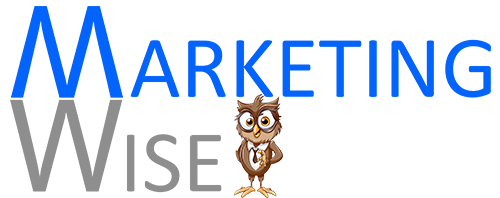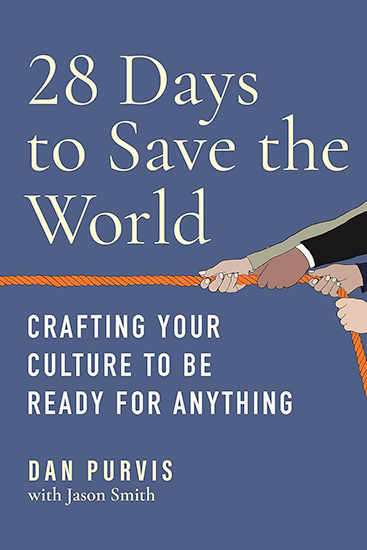When Disaster Strikes
A Guide to Responsible Marketing During Times of Crisis

Over the weekend, I started watching Netflix's "SPY OPS" series. Episode 1 turned out to be a detailed account of the CIA's early involvement in Afghanistan following the September 11, 2001 attacks. I learned a lot, and I look forward to watching the rest of the series, which you can find here: SPY OPS.
And then, yesterday, on the 22nd anniversary of the 9/11 attack, many people in the media paused to reflect on those horrific events--I saw all sorts of different takes on the idea of commemoration. There was also news of an earthquake in Morocco killing almost 3,000 people and severe flooding in Lybia killing more than 2,000 people with over 10,000 missing at the time this was written. These things coming right on the heels of each other while I was planning content for this blog made me consider the marketing implications of these kinds of events.
With this article, I aim to explore the complex landscape of marketing responsibilities in the aftermath of a disaster. We'll delve into best practices, ethical considerations, and practical steps that marketers can take to contribute positively to recovery efforts, all while maintaining the integrity and reputation of their brands.
The Importance of Marketing Sensitivity and Timing
Natural disasters, terrorist attacks, and other catastrophic events can disrupt not just individual lives but entire communities and economies. In the face of such adversity, businesses, including those in the marketing sector, find themselves navigating a delicate balance: On one hand, there's a need to sustain operations and safeguard jobs; on the other, there's an ethical obligation to act responsibly and sensitively, recognizing the human element in every tragedy.
In the wake of any disaster, people's attention is focused on the gravity of the event and its aftermath. Any marketing content that appears insensitive can quickly lead to public backlash, damaging your brand's reputation; on a personal level we, as marketers, don't want to cause anyone additional grief, even accidentally. It can be a delicate balancing act, though; while it's crucial to be sensitive, not all content needs to be--or even should be--removed or postponed. If the content is educational or offers genuine help during the crisis, it may still be appropriate to share.
Foundational Marketing Prep Work
Foundational Prep is the process of taking preventative measures or creating a foundational framework for, in this case, managing the disaster eventuality. As marketers, we must stay on top of the latest news to be able to pivot our marketing efforts with agility and empathy. This crucial step involves closely monitoring an evolving situation and understanding its implications for your target audience and industry. You can subscribe to news outlets and set up alerts relating to specific types of disasters that might relate to your company's offerings, its name, its customers, or its industry.
For example, this process for a vacuum company called "Cyclone Sweeper" could include setting up news alerts for events like tornados and hurricanes. The company can then use any of many media outlets like social media to express its concern for those affected and to put out a call to action to help support victims of the events.
This process also involves conducting a thorough audit of our existing marketing materials. This includes reviewing all social media posts, email campaigns, advertisements, and any other content that may be perceived as insensitive or closely connected to a crisis. By identifying and modifying or removing potentially problematic content, we can prevent unintended harm and damage to our brand's reputation.
More and more consumers are looking for, and expecting, social responsibility from brands. It's not enough to merely avoid appearing offensive or dismissive--brands now need to be proactive in providing social benefit. Cyclone Sweeper, for instance, might consider partnering with (or creating) a non-profit that provides support for victims of tornados and hurricanes and gives a percentage of revenue to aid in those efforts.
Ultimately, this prep sets the foundation for responsible marketing during times of crisis. It allows us to navigate the nuanced environment with sensitivity, empathy, and integrity. By proactively taking preventative measures and aligning our marketing efforts with the needs and sentiments of the affected communities, we can contribute positively to recovery efforts while upholding the reputation and integrity of our brands.
Marketing Steps to Follow After a Crisis
Step 1: Pause
The first step is to pause all scheduled marketing activities and assess the situation. Determine the severity of the event and how it might relate to your business or industry. This will help you decide whether to proceed with caution or even halt marketing activities temporarily.
Step 2: Audit
Review all existing marketing materials, including social media posts, email campaigns, and advertisements. Look for any content that could be perceived as insensitive or too closely related to the event.
If the audit uncovers content that could be problematic, consider modifying it, or removing it altogether. For example, if you have an ad campaign that features imagery similar to the disaster, it's advisable to replace those visuals.
If the content is educational or offers genuine help during the crisis, it may still be appropriate to share.
Step 3: Immediate Response
After auditing existing content and campaigns, the next step is to craft a response campaign. The most important thing is to show empathy and offer support. This could be as simple as a single social media post acknowledging the event and providing information on how to help, or how to get help. In many cases, the best practice would be to use the same combination of channels to communicate your message that you usually use for your marketing campaigns, but ensure consistency in tone and content across all platforms.
Social media allows for real-time communication, but it's also a platform where messages can be easily misconstrued. Be extra cautious with the wording and imagery you use.
If appropriate, you could align your brand with a relevant cause or charity. Make sure your support is genuine and not just a marketing ploy. Avoid any marketing that could be seen as capitalizing on the disaster. This includes sales, or using the event as a hook to promote your products or services.
Perhaps your business is in a unique position to help. In 2020, at the height of the need for ventilators due to COVID-19, GM was in a unique position with its manufacturing facilities to pivot and manufacture the much-needed ventilators. Velentium, a medical device design, development, and manufacturing company, was also in a unique position to help GM make it happen. Velentium partnered with a small medical device company and GM to increase emergency ventilator production from hundreds per month to thousands per week. If you'd like to learn more about that process, and how your company can prepare itself to be ready for whatever comes your way, check out "28 Days to Save the World: Crafting Your Culture to Be Ready for Anything."
Step 4: Content Creation Going Forward
I still remember the 2002 Anheuser-Busch Super Bowl commercial. The Budweiser Clydesdales are shown arriving in New York and after seeing the new city skyline, absent the Twin Towers, they essentially take a knee and bow their heads toward the city. This was such a departure from the company's usual light-hearted ads, like the "WASSUUUUUP!?" commercials, that it really landed as genuine and heartfelt. It was the first time I can remember being proud of corporate marketing like that.
I bring up that specific example to show that marketing with regard to a disaster can be done with respect and class--even for a brand that relied on silly advertising premises in the past.
Creating responsible content involves more than just avoiding topics that are directly related to the disaster. It also means understanding the general mood and concerns of the public. Are people looking for uplifting content? Or are they in a reflective mood, seeking deeper, more thoughtful material? Use social listening tools and customer feedback to gauge the emotional tone of your audience.
Any content you create should always be in alignment with your brand values, especially during sensitive times. If your brand stands for community, for example, this could be an excellent time to share stories or resources that help foster community resilience. If innovation is a core brand value, consider how your company can contribute innovative solutions to problems arising from the disaster.
Authenticity is key. Any attempt to capitalize on a disaster will likely be met with public backlash. Instead, focus on how your brand can genuinely contribute to the recovery efforts or provide value to your audience in a time of need. For instance, if you're a fitness brand, perhaps you could offer free online classes to help people cope with stress. If you're in the food industry, maybe you could donate a portion of your profits to food banks in affected areas.
Before publishing any content, have multiple team members or trusted partners review it to ensure it's sensitive, appropriate, and aligns with your brand values. Given the gravity of the situation, it's better to be overly cautious. If possible, consult with external experts or community leaders to ensure your content is both respectful and helpful.

By following these guidelines, you can ensure that your marketing efforts are not only sensitive to the situation but also constructive and beneficial. This is not just about protecting your brand's reputation; it's about being a responsible and ethical participant in a world that is often fraught with challenges and complexities.
For additional resources to help your business navigate post-disaster marketing and communications, check out this Crisis Communications Toolkit by Cision.

 By
By


